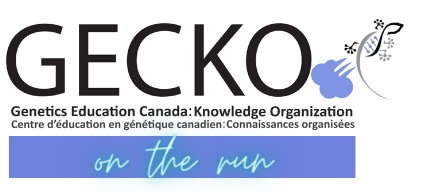
Download the PDF here.
Microarray is a high resolution test to assess very small gains and losses (copy number variants) of genomic information and areas of homozygosity (which might suggest an autosomal recessive condition).
Microarray should be considered in an individual with:
- isolated autism spectrum disorder (ASD) or ASD plus other findings
- isolated global developmental delay or intellectual disability
- multiple congenital anomalies in the absence of a syndrome diagnosis
- unusual physical features (dysmorphisms)
Microarray is not appropriate if a single gene condition (e.g. Duchenne muscular dystrophy) or an aneuploidy (e.g. Down syndrome, trisomy 18) is suspected.
Identifying the underlying etiology of an individual’s intellectual challenges and/or congenital anomalies is important for many reasons, including counselling (e.g. family planning, prenatal testing, prognosis), identifying associated medical risks, providing access to appropriate resources, and ending the diagnostic odyssey.
Updated June 2019
What is chromosomal microarray?
A microarray uses comparative genomic hybridization (CGH), and single nucleotide polymorphism (SNP) technologies to determine if there are small extra (micro-duplication) or missing (micro-deletion) pieces of genomic information. These gains and losses are called copy number variants (CNVs). A CNV can be: of no medical consequence; pathogenic, resulting in physical and/or intellectual consequences; or protective against disease (e.g. HIV infection).
SNP microarray can, in addition, identify region(s) of homozygosity (identical forms of a gene or genes) within an individual’s genetic material. The number and length of these regions could suggest the presence of a shared common ancestor, which might indicate an increased chance that the individual’s clinical presentation may be caused by an autosomal recessive disorder. An alternative explanation might be that the individual has inherited both copies of this genomic region from one parent, a situation called uniparental disomy (UPD).
Red Flags to consider genetic testing and/or genetic referral
Autism spectrum disorder (ASD): persistent deficits in communication and social interaction, and repetitive, restricted behaviours and/or interest
ASD “plus”: ASD accompanied by additional features such as congenital anomalies, dysmorphic features, differences in growth and/or head size, neurological disorders or pigmentary findings
Isolated global developmental delay or intellectual disability without ASD
Multiple congenital anomalies in the absence of a syndrome diagnosis
Unusual physical features (dysmorphisms)
Family history Red Flags to consider microarray testing
A close relative with a known CNV associated with a clinically significant physical and/or intellectual disability
When referring to Genetics for a positive family history include as much information about the affected family members as possible and encourage your patient to seek medical records and documentation.
What does the genetic test result mean?
There are three possible results when ordering microarray testing.
- Normal
- No micro-deletion/micro-duplication (CNV) within the limits of resolution of the test (typically very high).
- No clinically significant area of homozygosity.
- This does not exclude a syndrome caused by a mutation in a single gene or a balanced translocation.
- A referral for genetic consultation may be considered depending on the individual’s or family’s presentation.
- Pathogenic micro-deletion or micro-duplication (CNV) or significant area of homozygosity
- CNV previously described and associated with a known abnormal phenotype. Depending on the finding, parental testing and/or genetics referral may be considered.
- Significant area of homozygosity that might indicate an increased chance that the individual’s clinical presentation may be caused by an autosomal recessive disorder or UPD. A genetics referral may be considered.
- Variant of unclear clinical significance (VUS)
- Not every CNV in the genome is pathogenic.
- A variant that has not been described in the literature is challenging to interpret. Knowledge of parental status will determine whether or not the CNV is familial and less likely to be pathogenic, or de novo (new in the affected individual) and more likely to be pathogenic. Parental samples should be obtained and analysed, then a referral to genetics could be considered.
Identifying the underlying etiology of an individual’s intellectual disability and/or congenital anomalies ends the diagnostic odyssey and eliminates other unnecessary diagnostic tests. Additionally, diagnosis can: facilitate access to needed services; empower families by knowing the underlying cause of a relative’s disorder; identify associated medical risks and inform management; facilitate more accurate recurrence-risk counselling; and allow for targeted testing of at-risk family members
See www.geneticseducation.ca to connect to your local genetics centre.
For a comprehensive review of ASD (including ASD “plus”), please refer to the Genetics of autism spectrum disorder GEC-KO Messenger here.
For further information about microarray, refer to the following overview from Medical Laboratory Observer: https://www.mlo-online.com/home/article/13005438/snp-genotyping-with-the-next-generation-of-cgh-microarray. Additionally, see Shaffer LG, Microarray-Based Cytogenetics. In: Gersen SL, Keagle MB, editors. The Principles of Clinical Cytogenomics. New York: Springer-Verlag; 2013. P. 441-550: https://www.springer.com/gp/book/9781441916877.
Authors: S Morrison MS CGC, JC Carroll MD CCFP and JE Allanson MD FRCPC
Updated by
the GECKO team: S Yusuf MS CGC, JC Carroll MD CCFP and JE Allanson MD FRCPC
Disclaimer:
· GECKO is an independent not-for-profit program that does not accept support from commercial or non-academic entities.
· GECKO aims to aid the practicing non-genetics clinician by providing informed resources regarding genetic/genomic conditions, services and technologies that have been developed in a rigorous and evidence-based manner with periodic updating. The content on the GECKO site is for educational purposes only. No resource should be used as a substitute for clinical judgement. GECKO assumes no responsibility or liability resulting from the use of information contained herein.
· All clinicians using this site are encouraged to consult local genetics clinics, medical geneticists, or specialists for clarification of questions that arise relating to specific patient problems.
· All patients should seek the advice of their own physician or other qualified clinician regarding any medical questions or conditions.
· External links are selected and reviewed at the time a page is published. However, GECKO is not responsible for the content of external websites. The inclusion of a link to an external website from GECKO should not be understood to be an endorsement of that website or the site’s owners (or their products/services).
· We strive to provide accurate, timely, unbiased, and up-to-date information on this site, and make every attempt to ensure the integrity of the site. However, it is possible that the information contained here may contain inaccuracies or errors for which neither GECKO nor its funding agencies assume responsibility.


